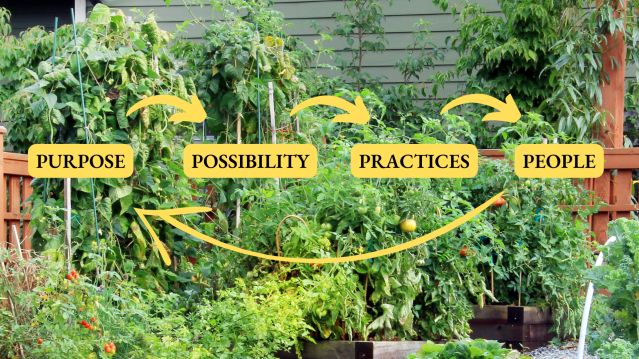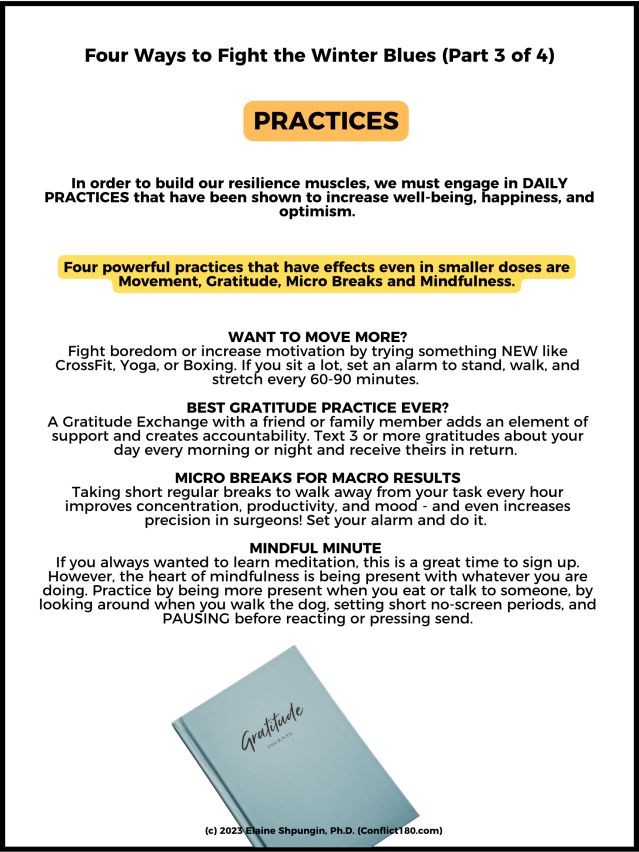Resilience
4 Ways to Fight the Winter Blues
Tips from the field of resilience.
Posted February 1, 2023 Reviewed by Vanessa Lancaster
Key points
- Studies have shown that people living further from the equator experience more winter blues, as well as more seasonal depression (SAD).
- The best way to fight the winter blues is by being purposeful and proactive.
- It helps to engage in daily activities that have been shown to shift neural pathways and increase dopamine, oxytocin, serotonin, and endorphins.

That "Funky February" feeling that hits people living in the Northern Hemisphere is real. Studies have shown that people living further from the equator experience more winter blues, as well as more seasonal depression (SAD).*
The best way to fight the winter blues is by being purposeful and proactive right now. The strategies below, which come from the field of resilience, can be used all year round but are especially helpful for turning "Funky February" into "Fun February."
Take Tiny Steps
It can be easy to get overwhelmed and paralyzed when you already feel low energy.
I recommend taking tiny steps in each of the four categories–or focusing on one category that calls to you and taking several tiny steps within that.
The brief descriptions below include examples of how I am using each category this winter to fight my own blues.
4 Principles of Resilience

1. Purpose. We begin by being more purposeful about how we spend our energy. We can ask ourselves what we want to harvest and focus our actions and choices around that.
I am focusing on “light” and “warmth” this winter, which includes everything from hanging string lights in my living room to “lightening” things up with one fun activity every week (Fun Fridays). Purposeful living is one of the most important ways to fight ennui and a sense of hopelessness. (For more, see "10 Ways Purpose Can Change Your Life.")
2. Possibility. The antidote to despair is a sense of possibility. We must cultivate our connection to optimism, awe, sacredness, beauty and magic by seeking positive experiences–and taking small steps toward bucket list items.
This winter I am taking small daily steps toward working on a 15-year old novel idea. By dividing the average number of words by 12 months, I figured out I only need to write 430 imperfect words per day to have a first rough draft this time next year. To help support me I joined an online writing group. Moving toward our dreams and bucket list items keeps our hearts from shriveling up. (For more, see "Change Your Future By Visiting Your Past.")
3. Practices. To fight the sands of time and entropy, we must engage in daily activities that have been shown to shift our neural pathways and increase dopamine, oxytocin, serotonin, and endorphins, such as exercise, laughter, meditation, and gratitude. I have signed up for Sharon Salzberg’s February Real Happiness Meditation Challenge (it’s just 28 days) and joined CrossFit to shake things up in my exercise routine. I need to move in order to stay positive, but get bored easily.
4. People. We thrive when we pursue time with positive people who lift us up, both for fun and empathy; when we let people know how we are doing; when we say yes to offers of practical support; and when we seek out formal supports such as coaches and groups.
This winter I have scheduled two weekend getaways, one of which is with a dear long-distance friend. The bonus to making these kinds of plans is to have something to look forward to (back to a sense of Possibility). (Read more about the radical act of saying yes to support.)
The poster below puts it all together and gives practical ideas for bringing each of the four resilience categories to life. Each of the four quadrants is also displayed separately below.
).png.jpg?itok=MCC_6Usz)




A version of this post appears on Conflict 180.
References
Shpungin, E. (2022). The Resilience Playbook. Esfira Press.
You can download the 18x24-inch poster here.


